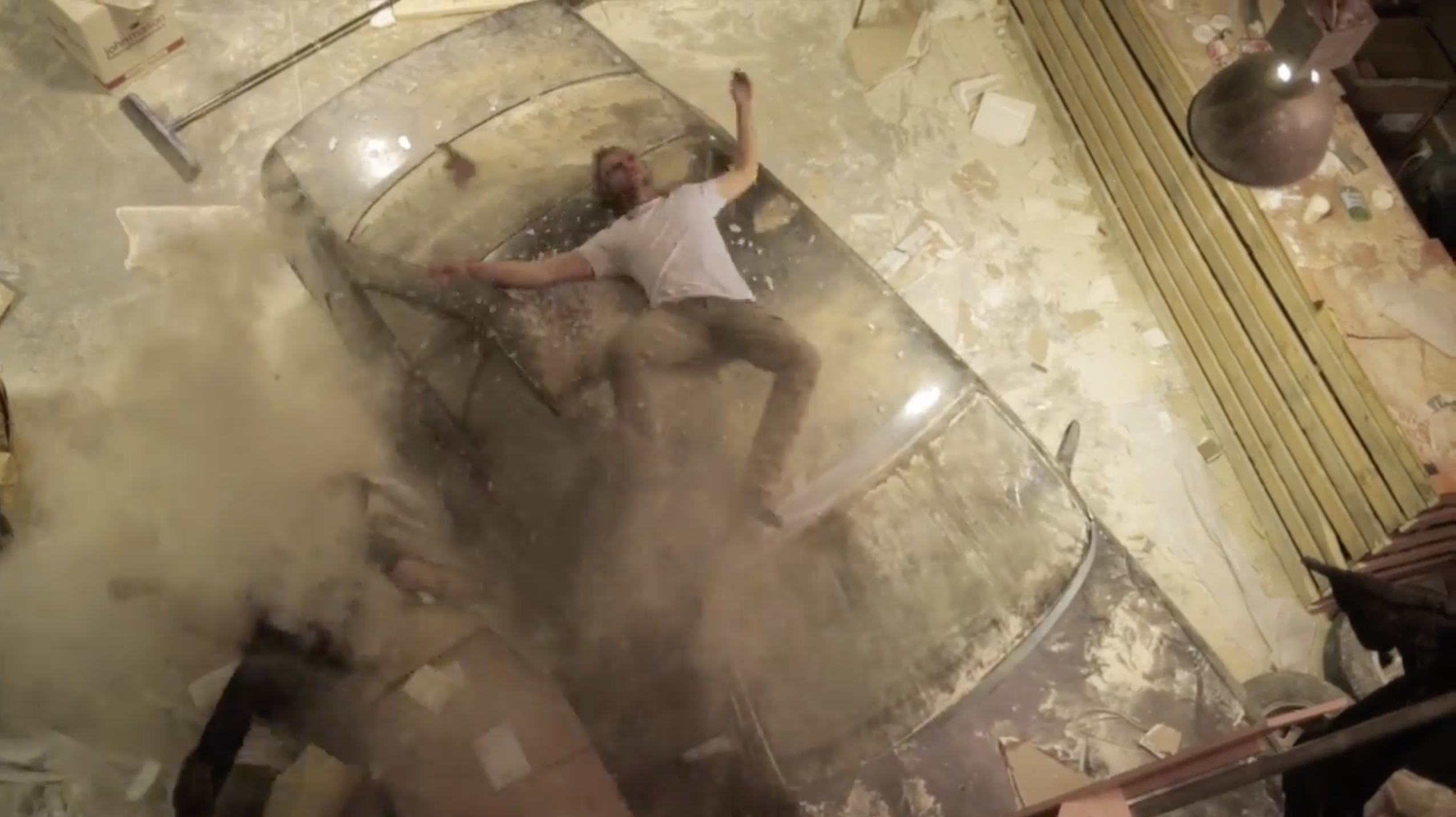Timothy Parsons has been set on fire, fallen off tall buildings and been kicked in the head by a sheep.
He is one of just a few hundred Australians who are behind the action in many blockbusters, performing a series of daring and intricately planned stunt sequences that can make or break a movie.
Everyone knows Chris Hemsworth’s Thor isn’t really getting thrown through a brick wall and Bruce Willis isn’t actually driving a speeding car into an exploding helicopter’s path. But little is known about stunt performers like Mr Parsons who risk their lives to do this stuff.
Currently the 29-year-old is sporting a black eye, the result of wrestling with a sheep on a film set recently. But the risks can be bigger and far more serious, with injuries an occupational hazard of the stunt profession.

In 2011, Scott McLean was a professional stunt performer working on the Bangkok set of The Hangover: Part II, as actor Ed Helm’s stuntman. He suffered a life-changing injury when a stunt went horribly wrong: his body was hanging out of a speeding car when a truck slammed into his head.
Mr McLean was in a coma for six weeks, went through eight months of rehabilitation and now requires round-the-clock care and medication for lengthy seizures.
Movie fans often don’t think about what goes into these visually impressive parts of a film, but it takes many hours of hard work – not to mention nerves of steel – to turn what can seem a physical impossibility into reality.
Julie Deakins, a nurse and occupational health and safety expert with decades of experience working with stunt actors in the Australian film industry, says: “I’ve seen a couple of explosions that were bigger than expected, resulting in burns and head injuries.”
But “fractures, sutures and a lot of rolled ankles are what I mainly see on the job”, adds Ms Deakins, who has worked on films including Baz Luhrmann’s Australia, X-men Origins: Wolverine and Pacific Rim 2.

She says that while the industry is a lot better at “cheating” stunts to minimise risks these days, there will always be injuries on set.
“I’ve seen short cuts on tighter-budget, smaller productions. Often it’s by inexperienced people in the production areas. Sometimes safety reports will have no relevance to the production, and late script or location changes, particularly if action is involved, don’t help.”
A film requiring lots of stunt action can be an insurance nightmare for movie executives. If an actor is seriously injured and production suffers extensive delays, that then becomes a problem for everyone – particularly if the actor is the likes of Tom Cruise, who performed most of his own stunts on the Mission Impossible films, boosting their authenticity and bankability.
Stunt performers are legally required to register with the Media Entertainment and Arts Alliance (MEAA). The MEAA’s communications manager, Lizzie Franks, says: “We have 354 stunt members registered … They include stunt actors, coordinators and safety supervisors.”
Like her, Ms Deakins stresses the importance of stunt actors registering with the union. “Realistically, we are asking these performers to put themselves, and at times others around them, at risk of injury for a commercial benefit.”
Mr Parsons says that, to qualify for MEAA grading, “you need to show proficiency in falls, body control with fighting and dancing, working in water, working with animals and driving”.
Meeting the MEAA’s requirements, and being on a film set where stringent safety precautions are in place, will determine whether a stunt performer emerges with a couple of scrapes and bruises or a serious head trauma – or, ideally, totally uninjured.
With a not very large pool of stunt performers in Australia’s film industry (and only a handful of women), often the same few people work in a variety of roles.
Aspiring stunt actors “need to have a really specific attitude”, says Mr Parsons. “You have to be a team player, really driven, really motivated and you have to love film.
“Do it because you love film. Don’t do it for any kind of fame.” – @livingstone_tj


